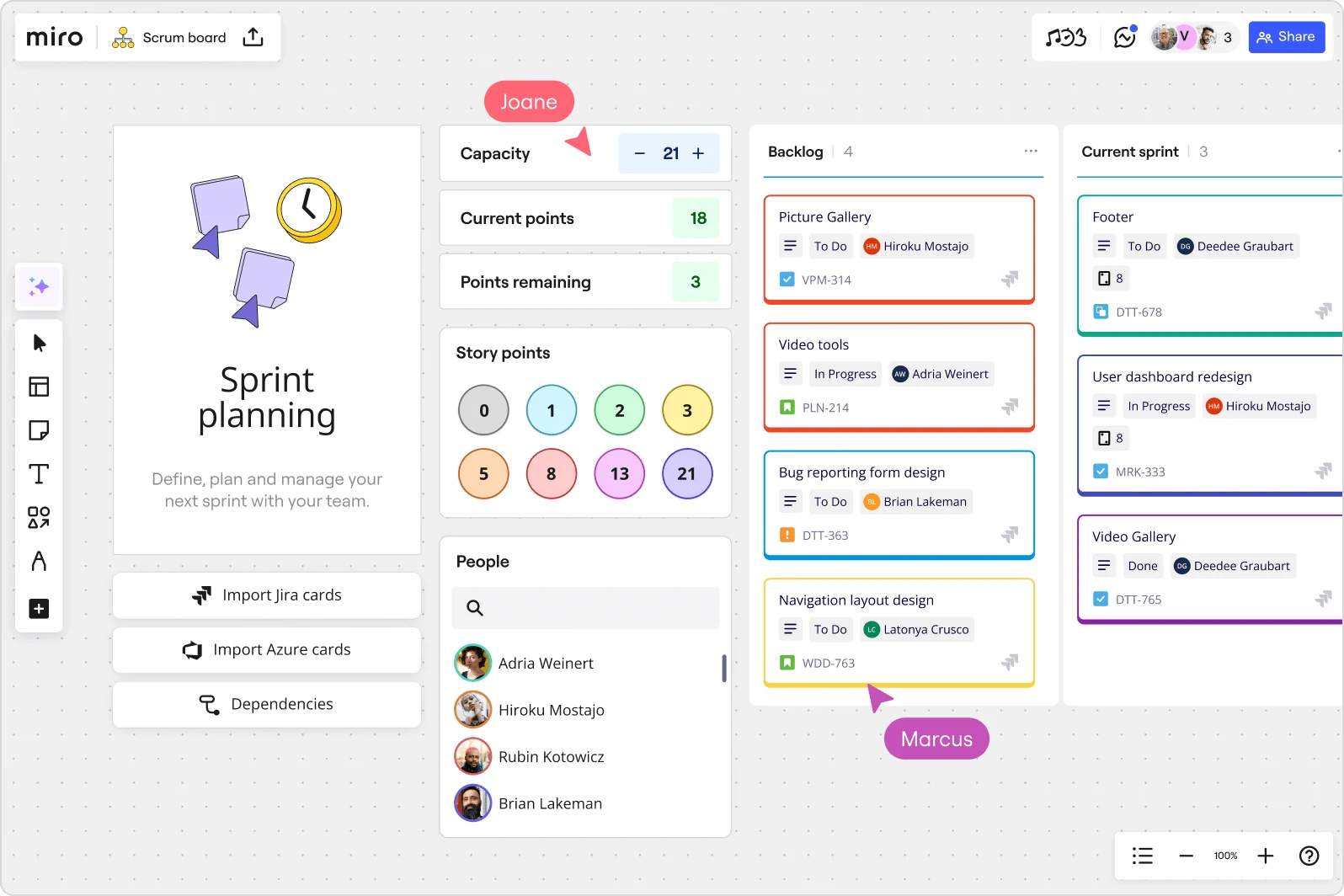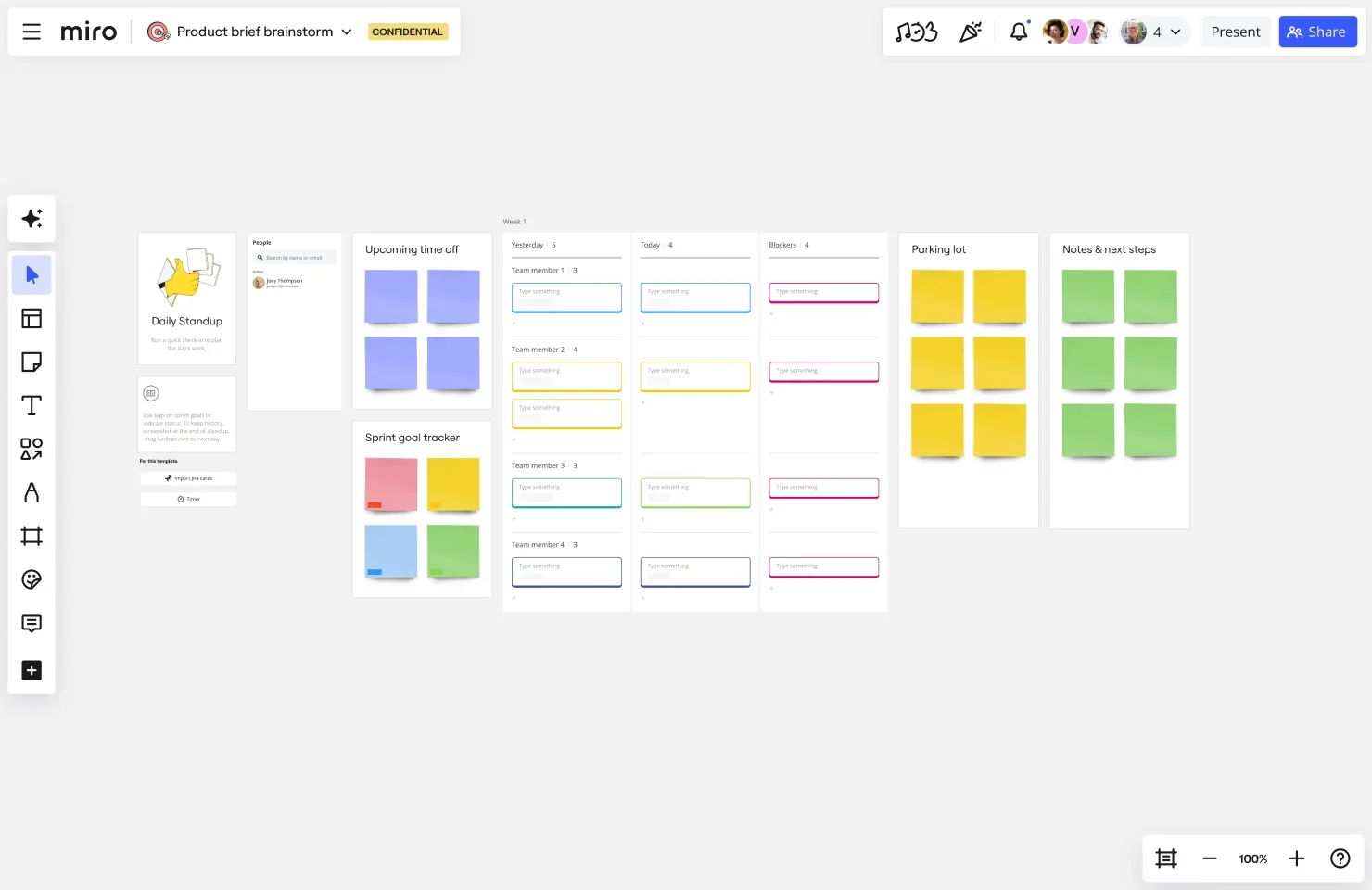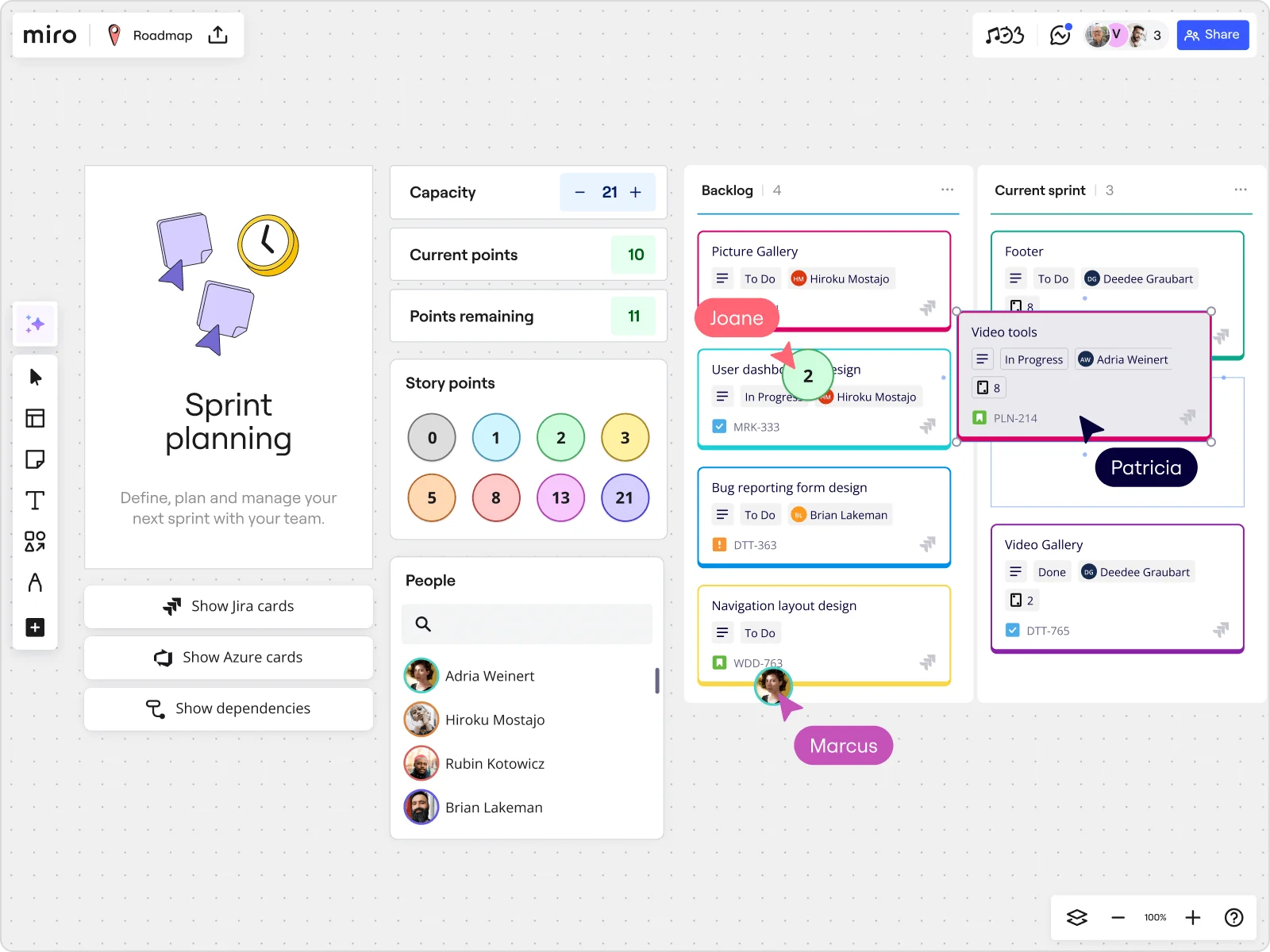
Agile vs. Scrum — everything you need to know

Summary
In this guide, you will learn:
- Agile is a philosophy, Scrum is a specific Agile framework.
- Agile emphasizes flexibility, iteration, and customer collaboration.
- Scrum uses fixed-length sprints with defined roles to deliver value.
- Agile supports continuous delivery; Scrum uses structured cycles.
- Scrum suits teams needing a clear framework; Agile suits adaptable projects.
- Scrum is structured; Kanban is flexible and flow-based.
Try Miro now
Join thousands of teams using Miro to do their best work yet.
The terms 'Agile' and 'Scrum' often get used interchangeably. While they're both powerful approaches with similar solutions to help teams work more efficiently, they aren’t the same thing. And understanding the key differences between Agile and Scrum is the first step to choosing the right method for your team or project. We've put this quick guide together to break down what sets them apart and help you consider the benefits of both.
Let's get started.
Agile vs. Scrum: 4 key differences
When comparing Agile and Scrum, here are the four major distinctions to consider:
1. Agile vs. Scrum — structure
Agile is a mindset built on guiding principles and values. It doesn’t prescribe specific roles or processes, making it adaptable to many types of projects. Agile includes several frameworks like Kanban, Lean, and Scrum, which give teams structured methods for implementing Agile values. Scrum provides a clear framework with defined roles, meetings, and artifacts to help teams stay focused and organized.
2. Agile vs. Scrum — scale
Agile is a broad philosophy that works with various frameworks and team sizes. Scrum, on the other hand, is tailored for smaller teams working on specific projects. It divides large tasks into manageable sprints, which is particularly helpful for focused, small teams that need a structured process.
3. Agile vs. Scrum — team size
Agile allows flexibility in team size and structure. Teams can be large or small, specialized or cross-functional. Scrum, however, requires three defined roles: Scrum Master, Product Owner, and Development Team. It works best with teams of about 5-9 members, which helps facilitate communication and decision-making.
4. Agile vs. Scrum — adaptability
Agile emphasizes continuous adaptability, allowing teams to adjust throughout the project as they gather feedback. Scrum also focuses on adaptability but follows a more structured approach with time-boxed sprints, typically lasting 2-4 weeks. At the end of each sprint, the team reviews and adjusts based on outcomes, ensuring a balance of flexibility and focus.
Benefits of Agile
Agile brings a lot of value to teams, especially those working on fast-moving projects. Let's take a closer look at the benefits of adopting an Agile approach to work:
Flexibility and adaptability
Agile lets teams shift their priorities and workflows as the project moves forward. This flexibility is perfect for environments where things change quickly, and the project’s full scope isn’t clear from the start. It helps teams stay responsive to new needs and feedback.
Collaborative approach
Agile encourages regular collaboration between the team and stakeholders. This ongoing communication keeps everyone aligned, makes decision-making easier, and helps the team stay focused on delivering what matters most to customers.
Best for complex projects
Agile works really well for complex projects where the full picture isn’t clear upfront. By breaking things into smaller tasks, teams can adjust as they go and continuously improve the work, delivering value little by little throughout the project.

Benefits of Scrum
In comparison to Agile, let's look at the benefits of opting for a more specific framework like Scrum:
Clear role definitions
Scrum defines exactly what each person on the team should do. The Scrum Master helps remove obstacles, the Product Owner sets priorities, and the team gets to work. This clarity makes it easier to stay organized and focused on the right things.
Time-efficient sprints
In Scrum, work is broken up into short, focused sprints, usually lasting 2-4 weeks. This keeps the team on track, helps them make steady progress, and ensures that they deliver valuable results consistently.
Increased focus and accountability
With Scrum, everyone checks in daily to stay on top of tasks, and reviews happen at the end of each sprint. These regular check-ins help the team stay focused, stay accountable, and keep making adjustments to improve.
TIP: If you're looking for resources to get started, our Scrum templates collection is a great place to find ready-to-use tools for planning, tracking, and managing your projects effectively.

How to choose between Agile and Scrum
We've compared Agile vs. Scrum in detail. But how do you know which one your team needs? Picking the right approach depends on a few factors. Here are some tips to help you make the best possible decision:
Consider team size
If you have a small team that thrives on clear roles and responsibilities, Scrum’s structure may be the right fit. But if you have a larger team or need more flexibility, Agile can offer the freedom to adapt as needed.
Think about project stability
If your project’s requirements are still being defined or likely to change, Agile will give you the flexibility to iterate and adjust quickly. Scrum is more structured, so it works best when you have more clarity on your project’s goals but still need flexibility to break it down into manageable tasks.
Consider the level of structure needed
If you prefer clear guidelines, roles, and rituals, Scrum’s defined process will keep your team on track. If you want less rigidity and more freedom to experiment, Agile provides that openness to adapt your process as you go.
Run Agile and Scrum events in Miro
No matter which framework you opt for, having the right tool goes a long way — and the great news it that Miro comes with intuitive and powerful features to help you easily execute both. Easily build your own Scrum board — or kickstart team sessions using one of our many templates.
Sign up to get started.
Author: Miro Team
Last update: October 2, 2025